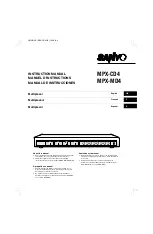
1-39
Cisco 6260 Hardware Installation Guide
OL-2365-02
Chapter 1 Product Overview
Cisco 6260 System Overview
1.2.3.12 Network Clocking Overview
The NI-2 card receives its network timing signal from any one of the following sources:
•
A BITS clock. When a BITS clock is the network timing signal source, the Cisco 6260 chassis
receives a clock signal through designated pins on the I/O module and distributes the signal through
the Cisco 6260 backplane.
•
An internal clock.
•
E3 or OC-3c network trunk interface. An NI-2 card synchronizes with the network timing source
and provides a clock reference signal to line cards in the Cisco 6260 chassis and to subtended
node chassis.
The active NI-2 card supplies a redundant pair of clock signals to all cards in the chassis. This same
clock reference can be propagated to subtended systems via the trunk and subtended interface ports.
This is done by configuring the subtending port of the root system to source the network-derived
clock. The trunk port of the subtended system is configured as the network clock source for that
chassis. This chain continues down the subtended tree.
1.2.3.13 Redundancy Overview
Redundancy is available for the Cisco 6260 system. The following forms of redundancy are available:
•
NI-2 card cold redundancy, which allows a standby NI-2 card to take over system operations in the
event of a complete failure of the active NI-2 card.
•
Automatic protection switching (APS) link redundancy, which is available on OC-3c/OC-3c NI-2
card network trunk and subtend interfaces.
Note
Line card redundancy is not currently supported in the Cisco 6260 system.
1.2.3.13.1 NI-2 Card Redundancy
NI-2 card redundancy requires that two NI-2 cards be installed in the chassis. The primary card is
installed in slot 10 of the chassis, and the secondary card is installed in slot 11. Either the primary or the
secondary NI-2 card can serve as the active NI-2 card. The interface types must be the same for both the
primary and secondary NI-2 cards. The following NI-2 cards support cold redundancy in the Cisco 6260
chassis:
Fan alarm
(
9
in
Figure 1-18
)
FAN 1
Red
The fan module or fan tray is not operational and is in
alarm mode.
FAN 2
Red
The fan module or fan tray is not operational and is in
alarm mode.
ENET
interface LED
(
12
in
Figure 1-18
)
ACT
Green solid or
blinking
The Ethernet interface is active.
Off
The Ethernet interface is inactive.
LNK
Green solid
The Ethernet link is connected and enabled.
Table 1-12
OC-3c/OC-3c NI-2 Card LED Group Indicators (continued)
LED Group
LED
State
Function
Содержание 6260
Страница 166: ...5 22 Cisco 6260 Hardware Installation Guide OL 2365 01 Chapter 5 Troubleshooting Alarms ...
Страница 208: ...B 8 Cisco 6260 Hardware Installation Guide OL 2365 02 Appendix B Port Mapping Specifications Standard Telco Color Chart ...
Страница 214: ...C 6 Cisco 6260 Hardware Installation Guide OL 2365 02 Appendix C Connector and Pinout Specifications Ethernet Port ...
















































